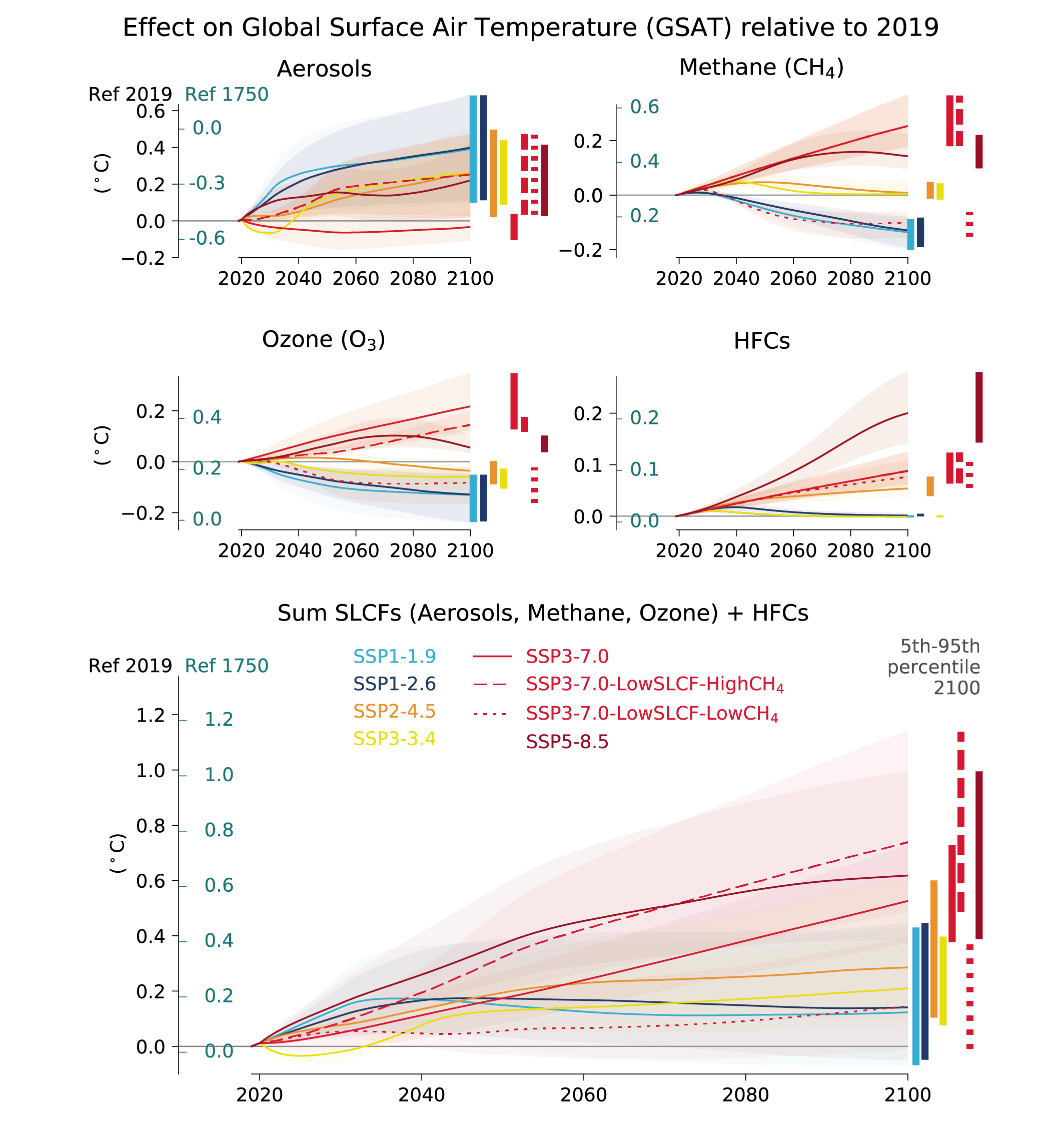Back chapter figures
Figure 6.22
Figure caption
Figure 6.22 | Time evolution of the effects of changes in short-lived climate forcers (SLCFs) and hydrofluorocarbons (HFCs) on global surface air temperature (GSAT) across the WGI core set of Shared Socio-Economic Pathways (SSPs). Effects of net aerosols, methane, tropospheric ozone and hydrofluorocarbons (HFCs; with lifetimes <50years), and the sum of these, relative to the year 2019 and to the year 1750. The GSAT changes are based on the assessed historic and future evolution of effective radiative forcing (ERF; Section 7.3.5). The temperature responses to the ERFs are calculated with an impulse response function with an equilibrium climate sensitivity of 3.0°C for a doubling of atmospheric CO2 (feedback parameter of –1.31 W m–2°C–1, see Cross-Chapter Box 7.1). The vertical bars to the right in each panel show the uncertainties (5–95% ranges) for the GSAT change between 2019 and 2100. Further details on data sources and processing are available in the chapter data table (Table 6.SM.3).
